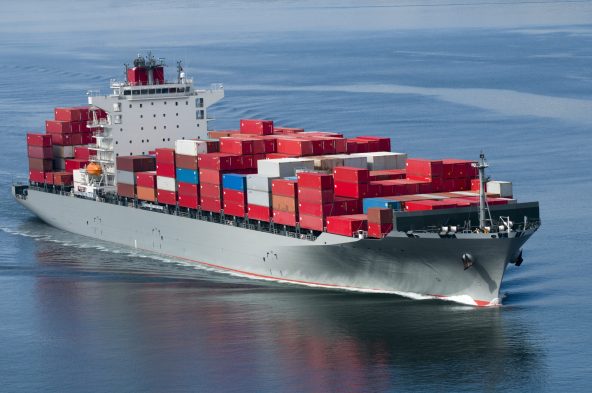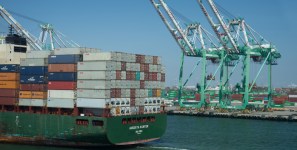C.H. Robinson: How Shippers can prepare for a Potential ILA Strike Amid an Increasingly Disrupted North American Shipping Landscape
C.H. Robinson’s Mia Ginter, director of North American Ocean, provides insights into the pending ILA East and Gulf coast port strike and how shippers can prepare now. While there is still hope a strike will be avoided, labor issues in Canada and ongoing ocean disruptions could heighten the impact of a strike for shippers that do not prepare with contingency plans. Here’s an overview of the potential strike and what shippers can do now to navigate it strategically:
Read also: East Coast and Gulf Coast Ports Face Strike Threat as ILA Halts Labor Negotiations
As master-contract talks between the International Longshoremen’s Association (ILA) and United States Maritime Alliance (USMX) evolve, an East and Gulf Coast port strike is looking increasingly likely. And with less than two months until the current contract ends and a potential strike begins, shippers should start preparing now to avoid significant disruption.
The ILA hasn’t had a coastwide strike for nearly five decades. But there’s little doubt that a strike spanning both the East Coast and Gulf Coast – home to 5 of the 10 busiest ports in North America – would be far-reaching. No industry or region would be immune to the ripple effects of this major disruption. Both U.S. importers and exporters need to consider how a port closure would impact their freight now. Shippers with freight across Europe, Oceania, and Asia bound for the U.S. will especially feel the impact, which would cascade to disrupt the flow of freight across the U.S., Canada and Mexico. As we’ve seen with other global supply chain disruptions, this cascade would lead to both added time in transit and added costs ranging from congestion fees to possible detention and demurrage charges.
While no industry would be exempt to disruptions from an ILA strike, some would be more affected than others. For industries with just-in-time inventory models, like automotive or pharmaceuticals, even two days of strike activity could significantly disrupt operations. Many auto parts and components are imported through the East Coast, so the risk of production delays would be high. On the exporting side, shipments to Europe, Latin America and the Indian Subcontinent primarily leave from the U.S. East Coast, so exporters that rely on those trade lanes could be at a higher risk of disruption.
Today, shippers have two options for how to respond to a potential ILA strike. They can wait it out and address any disruptions if a strike happens. Or they can make contingency plans now to reduce the impact a strike would have on their shipments and their balance sheets.
Waiting for a resolution
It is possible that the U.S. government will step in to help the ILA and USMX make a deal. The Biden administration has shown its willingness to be active in labor negotiations, as they did to avoid a rail strike in 2022. However, the ILA has stated that they don’t want the government’s help. Further complicating government intervention is the upcoming presidential election.
If the government doesn’t intervene before a potential strike starts, it would almost certainly intervene after. Stoppages of the East and Gulf Coast ports would be devastating to the economy. As a rule of thumb, a one-week disruption at a port can result in a one-month delay in a cargo’s journey.
Unlike with U.S. railroad strikes, the U.S. President or Congress cannot impose a contract on dockworkers unless legislation is passed first. However, if there is a possibility of the port strike endangering national health or safety, the President can request a court order for an 80-day cooling-off period under the Taft-Hartley Act. This action would temporarily pause the strike while negotiations continued.
Preparing for a strike
For shippers that don’t want to risk, or can’t risk, the delays and disruptions brought on by a potential strike, preplanning will be essential.
Many importers already got ahead of a potential strike by shipping cargo into the U.S. earlier than usual this year. This was driven not only by a potential ILA strike, but also factors like continued re-routings around the Red Sea and the threat of duties on certain goods.
Even those who imported freight early need to be alert as the full scope of impact is unknown. Considering alternative port destinations is one thing, but planning for inland truck and rail will also be a critical component to cost savings and risk mitigation.
Two potential U.S. East Coast ports in the event of a strike are the non-union ports in Portland, Maine, and Chester, Pennsylvania. However, these ports are served by small, niche carriers that only support the European market with their limited capacity. Shippers that want to secure space with these carriers will need to start booking now and create a strong cadence of support with them. Otherwise, capacity will likely be gone by the time a potential strike occurs.
If shippers are willing to spend more and reroute to the U.S. West Coast, assuming there is capacity available, contingency plans will need to include inland support. East and Gulf Coast cargo diverted to the West Coast is far less likely to be prioritized for domestic intermodal truck or rail services without prior planning. In addition to capacity and delay concerns, warehousing space may be necessary to store rerouted freight until inland capacity is available.
Additionally, East-bound rail congestion could also lead to delays. Many railways are prepared with plans to route freight East from Southern California and the Pacific Northwest, but shippers should still expect significantly increased transit times.
For exporters, pre-booked ocean capacity could be left sitting at East and Gulf Coast ports until the strike is completed and ships can dock. The longer the strike, the longer it will take the ports to clear the backlog containers and resume outbound shipments. Similar congestion can be expected at alternative ports too if importers pivot to Canadian and U.S. West Coast ports to keep goods moving.
If rerouting freight through Canada, shippers will need to ensure their intended gateway is clear of its own strike risks. The Teamsters Union, which supports workers at both main Canadian railways, issued a 72-hour strike notice on August 18. This will paralyze the country’s supply chain and eliminate alternative ports and inbound capacity for shippers pivoting from the U.S. East and Gulf Coasts. ILWU members at the Port of Vancouver are also expected to vote on a strike soon. Meanwhile, longshoremen at the Port of Montreal continue to work without a collective agreement.
Converting to air will be a more expensive option than using alternative ocean ports but allows shippers to pivot on short notice. Shippers considering air should keep in mind that passenger flights will be reduced between the current busy summer travel season and October. Right now, air capacity is already limited due to increased demand from e-commerce from Asia and Red Sea diversions. Some carriers are already discussing imposing peak season surcharges at the end of August or beginning of September. The longer shippers wait to book space, the less capacity will be available, and costs will only go up.
Even if you’re not importing or exporting to/from the U.S. East or Gulf Coasts, any shipment within North America will likely feel the ripple effect of this disruption. Shippers should consider how their domestic supply chain can pivot in the event of a strike. Utilizing their full network of distribution centers and warehouses, if they have them, will be key to avoid costly cross-country transportation.
Planning for the unprecedented
Alternative ports and transportation modes could quickly become overwhelmed in the event of an ILA strike. It’s not time to press the panic button now; an ILA-USMX agreement is still possible.
But shippers that want to be prepared should be taking actions today – like staying informed on the labor situations in the U.S. and Canada, identifying alternative gateways, or possibly, starting to move cargo to niche carriers or alternate modes.





Leave a Reply